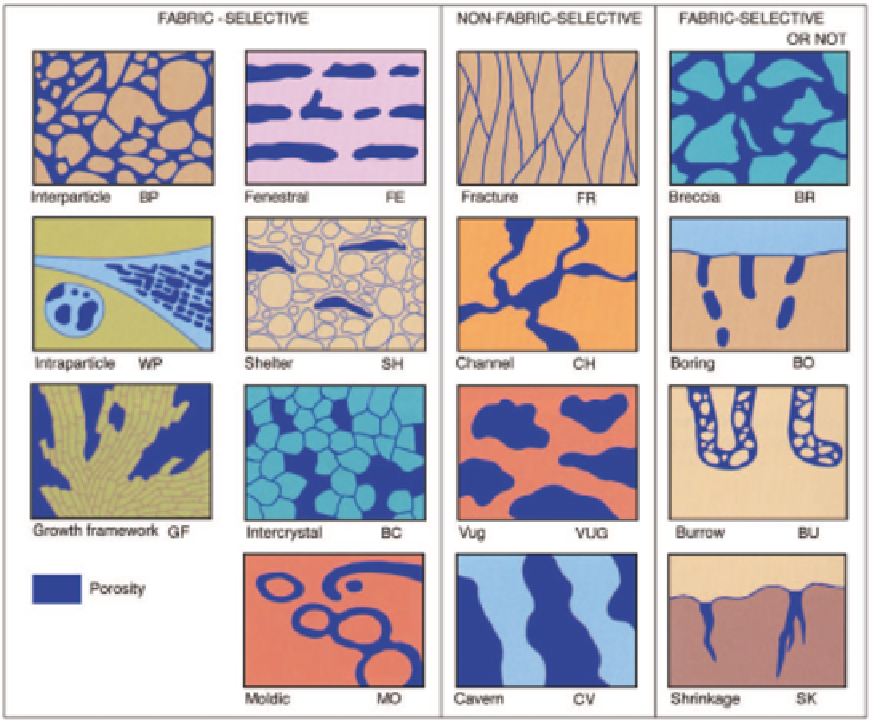Geology Reference
In-Depth Information
MODIFYING TERMS
Genetic Modifiers
Size Modifiers
(for regularly-shaped pores < cavern size)
Process
Direction of stage
Classes
mm
256
Solution
s
Enlarged
x
Megapore
mg
large
lmg
Cementation
c
Reduced
r
32
Internal sedimentation i
Filled
f
small
smg
16
Time of formation
Mesopore
ms
large
lms
Primary
P
Secondary
S
1/2
pre-depositional
Pp
eogenetic
Se
small
sms
depositional
Pd
mesogenetic
Sm
1/16
telogenetic
St
Micropore
mc
Genetic modifiers are combined as follows
Use size prefixes with basic porosity types: mesovug -> msVUG;
Process + direction + time
small mesomold -> smsMO; microinterparticle -> mcBP
Examples:
solution enlarged
sx
cement-reduced primary
crP
Abundance Modifiers
: e.g. percent porosity: (15) or ratio of
internal sediment-filled eogenetic ifSe
porosity types: (1 : 2) or ratio and percent: (1 : 2) (15%)
Fig. 7.5.
Pore types and porosity classification
(Choquette and Pray, 1970). After Adams and McKenzie (1998).
Fabric-selective porosity
is controlled by primary or secondary fabrics. Primary depositional fabrics include interparticle,
intraparticle, growth framework, fenestral, and shelter pores. Fabric-selective secondary porosity is formed by intercrystal-
line and moldic pores.
Nonselective porosity
is independent of depositional fabrics and includes fracture, channel, vug and
cavern pores. Breccia, boring, burrow, and shrinkage pores may be
fabric-selective or not.
These qualitative criteria can be
substantiated by the additional use of genetic, size and abundance modifiers. Note that the definition of micro- and mega- (or
macro-) pores does not always coincide with the limits used by Choquette and Pray. More generalized definitions of
microporosity prefer pore sizes of 1 mm or less (e.g. Pittman 1971). Examples of the use of the Choquette and Pray classifi-
cation are shown on Pl. 29/1 and Pl. 30/1. See Box 7.4 for definitions of pore types.











